#Anthobaphes violacea
Photo
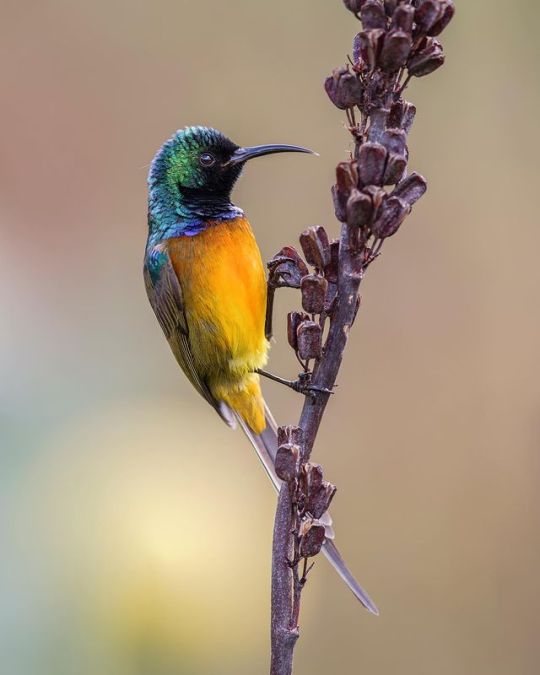
Orange-breasted Sunbird
#orange breasted sunbird#sunbird#Anthobaphes violacea#Passeriformes#Nectariniidae#Anthobaphes#bird#upl
61 notes
·
View notes
Text

Orange-breasted Sunbird (Anthobaphes violacea), family Nectariniidae, order Passeriformes, South Africa
photograph by Marcus Conway
784 notes
·
View notes
Text
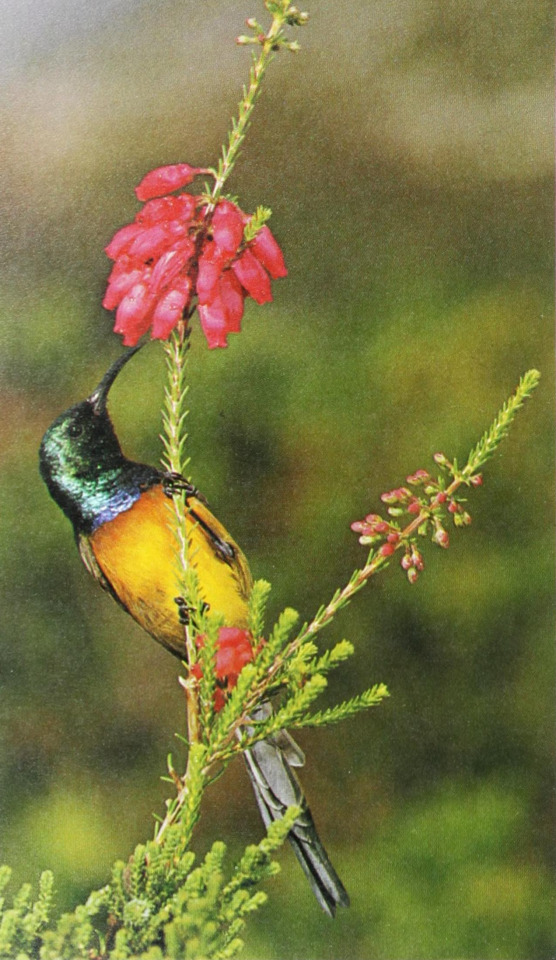
Orange-breasted sunbird (Anthobaphes violacea)
By: C. Laubscher
From: The Complete Encyclopedia of the Animal World
1980
#orange-breasted sunbird#sunbird#passeriform#bird#1980#1980s#C. Laubscher#The Complete Encyclopedia of the Animal World (1980)
69 notes
·
View notes
Photo
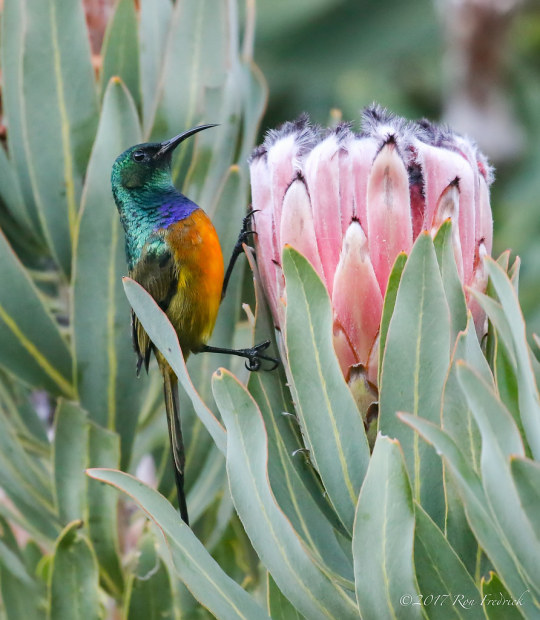
Orange-breasted Sunbird (Anthobaphes violacea)
© Ron Fredrick
46 notes
·
View notes
Text

November 11, 2021 - Orange-breasted Sunbird (Anthobaphes violacea)
These sunbirds are found in fynbos scrubland at the southern tip of Africa. They mostly eat nectar but also feed on insects and spiders, especially during the breeding season. Females build oval-shaped nests with side entrances in bushes from roots, heather, spiderwebs, and other materials and incubate the eggs alone. Both parents care for the chicks.
#orange-breasted sunbird#sunbird#anthobaphes violacea#bird#birds#illustration#art#grassland#birblr art
85 notes
·
View notes
Photo

Orange-breasted Sunbird (Anthobaphes violacea)
© Ron Fredrick
6 notes
·
View notes
Text
Anthobaphes violacea
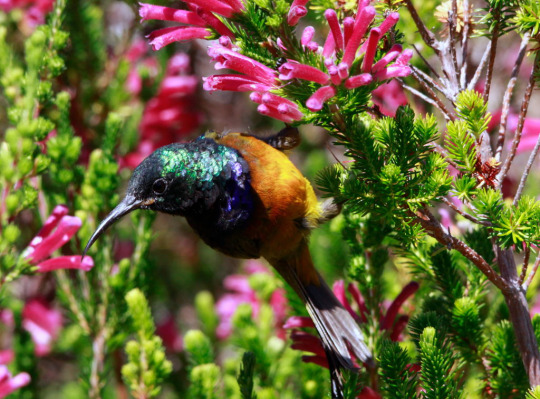
By Derek Keats, CC BY 2.0
Etymology: Bright-Colored
First Described By: Cabanis, 1850
Classification: Dinosauromorpha, Dinosauriformes, Dracohors, Dinosauria, Saurischia, Eusaurischia, Theropoda, Neotheropoda, Averostra, Tetanurae, Orionides, Avetheropoda, Coelurosauria, Tyrannoraptora, Maniraptoromorpha, Maniraptoriformes, Maniraptora, Pennaraptora, Paraves, Eumaniraptora, Averaptora, Avialae, Euavialae, Avebrevicauda, Pygostaylia, Ornithothoraces, Euornithes, Ornithuromorpha, Ornithurae, Neornithes, Neognathae, Neoaves, Inopinaves, Telluraves, Australaves, Eufalconimorphae, Psittacopasserae, Passeriformes, Eupasseres, Passeri, Euoscines, Passerides, Core Passerides, Passerida, Nectariniidae
Status: Extant, Least Concern
Time and Place: Within the last 10,000 years, in the Holocene of the Quaternary

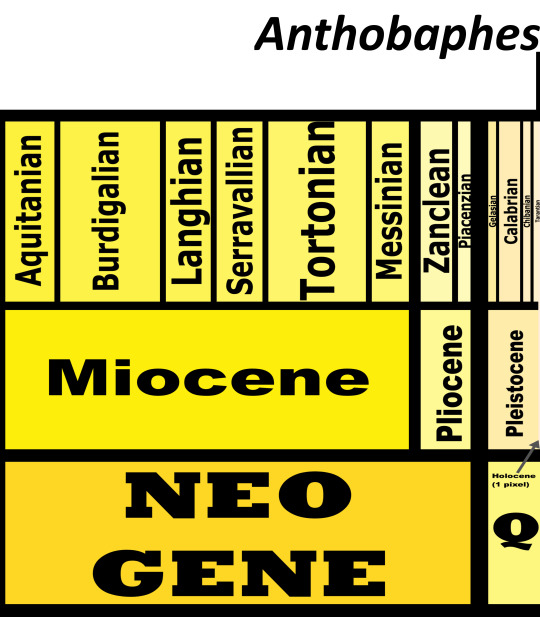
The Orange-Breasted Sunbird is known from the Cape of South Africa
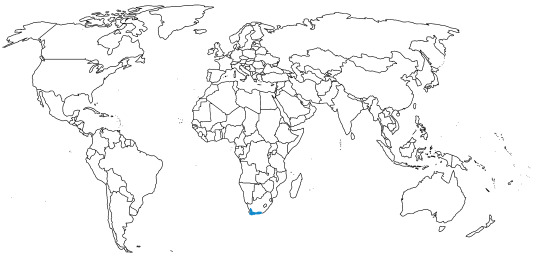
Physical Description: The Orange-Breasted Sunbird is an amazingly distinctive bird, very small at only 16.5 centimeters long for males and 13.5 centimeters long for females. The males are distinctive in general, with long dark tails and vibrant colors - their chests are orange and purple, with green heads; their bodies are yellow and, in general, they are iridescent and shiny. The females are yellow all over, and aren’t shiny at all. Both have long, curved beaks for feeding on nectar.
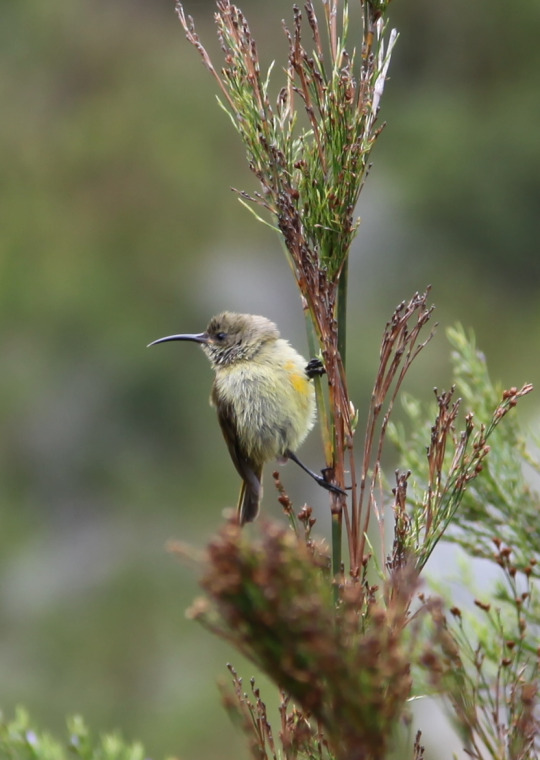
By Raymond Ellis, in the Public Domain
Diet: The Orange-Breasted Sunbird primarily feeds on nectar, though it will occasionally supplement its diet with insects.
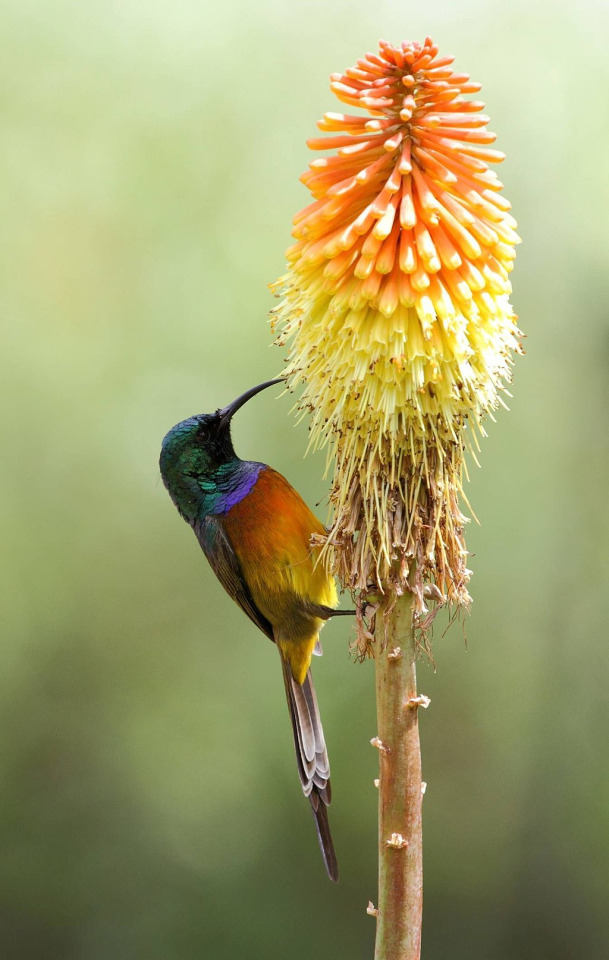
By Aland Manson, CC BY-SA 4.0
Behavior: These birds will forage alone or in small groups, mainly on the ground and in plants while reaching for food. They do occasionally form loose groups during the non-breeding season. They make high-pitched melodious notes, including “tzzurr tzzurr” or “Jeeeu jeeu” calls. They also make “seep-seep-seep-seep” calls back and forth, and males - when they chase each other - make calls that sound like “Ke-ke-ke-ke”.
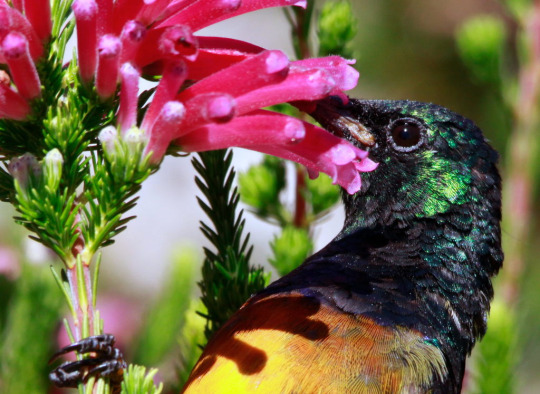
By Derek Keats, CC BY 2.0
The Orange-Breasted Sunbird mates all year round, though it peaks mating from May through August. Usually, they’ll lay two to three broods a year. The male makes territorial displays, including wing-stretching to reveal tufts of feathers. The female will then build the nest alone over the course of two weeks, making an ovular porch with a small entrance out of twigs and roots. They’re usually held together with cobwebs and down. Then, one to two eggs are laid and incubated by the female for two weeks. The chicks are brooded and fed by both parents for three weeks; they are then dependent on the parents for another three weeks after leaving the nest. They will migrate at least somewhat in search of flowering plants - aka, food.
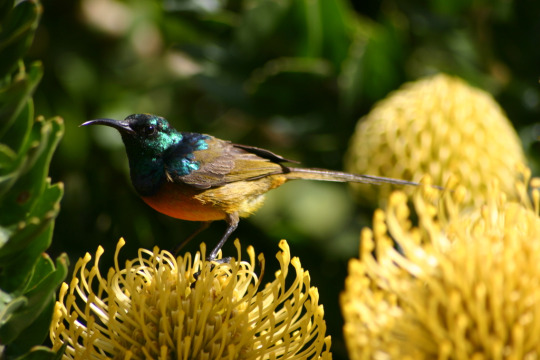
By Derek Keats, CC BY 2.0
Ecosystem: These sunbirds live in the Fynbos, a belt of shrublands along the Cape of Africa. They are occasionally found in gardens as well, and in the Karoo basin. Cuckoos do parasitize their nests.
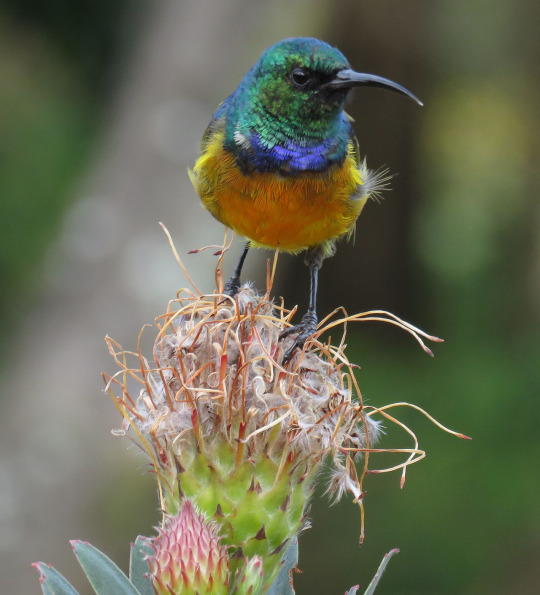
By Prosthetic Head, CC BY-SA 4.0
Other: The Orange-Breasted Sunbird, while in a restricted range, is not considered threatened with extinction. That being said, habitat disturbance and loss has caused some population drops.
~ By Meig Dickson
Sources under the Cut:
Cheke, R. & Mann, C. (2019). Orange-breasted Sunbird (Anthobaphes violacea). In: del Hoyo, J., Elliott, A., Sargatal, J., Christie, D.A. & de Juana, E. (eds.). Handbook of the Birds of the World Alive. Lynx Edicions, Barcelona.
Jobling, J. A. 2010. The Helm Dictionary of Scientific Bird Names. Christopher Helm Publishing, A&C Black Publishers Ltd, London.
#Anthobaphes#Anthobaphes violacea#Orange-Breasted Sunbird#Sunbird#Dinosaur#Dinosaurs#Bird#Birds#Songbird#songbird saturday & sunday#Passeriform#Quaternary#Africa#Birblr#Factfile#Nectarivore#prehistory#biology#a dinosaur a day#a-dinosaur-a-day#dinosaur of the day#dinosaur-of-the-day#science#nature
153 notes
·
View notes
Photo

Photo of the Day – The Orange-breasted Sunbird (Anthobaphes violacea) is the only member of the genus Anthobaphes, though it is sometimes placed in the genus Nectarinia. The species is endemic to the fynbos habitat of south-western South Africa.
This lovely bird was photographed here by Adam Riley in Rooiels, South Africa
#RockjumperBirding#birds#birding#birdwatching#nature#wildlife#photography#birdphotography#naturephotography#wildlifephotography#sunbird
152 notes
·
View notes
Photo

Anthobaphes violacea (Orange-breasted sunbird) El suimanga pechinaranja, también conocida como nectarina de pecho anaranjado, es una especie de ave paseriforme de la familia Nectariniidae endémica del fynbos de Sudáfrica. Es la única especie del género Anthobaphes. Anteriormente se clasificaba en el género Nectarinia. https://www.instagram.com/p/CZMh5s-ryUp/?utm_medium=tumblr
0 notes
Text
Guest blog post Joe G. Martin
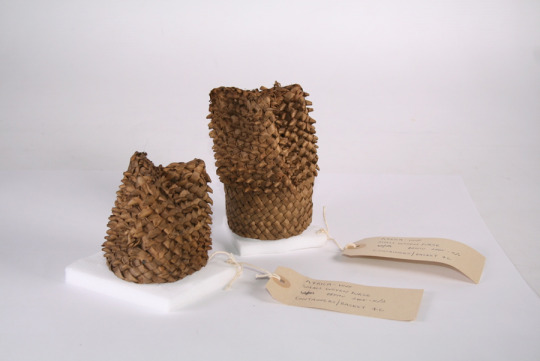
I’ve loved the opportunity to work on this object, the chance to conserve this purse allowed for exploration of reshaping basketry and develop knowledge of organic materials in conservation. From examining the purse I was able to discover multiple factors pointing the pieces origins: A small insect nest and frass from inhabitance appeared to be that of a South African lacewing (a type of small flying insect with translucent and reflective wings). A small feather also found in the base of the purse, under microscope analysis appeared to be that of the orange-breasted sunbird (Anthobaphes violacea), which is also native to South Africa. This may provide an insight into the use of the carrying vessel for the transportation of small birds and other foraged items such as berries. Upon research it is clear that reeds, such as those used in construction of the object, are not in abundance across the continent and are rather focused in areas around marshes or such landscapes with moisture-rich soil. Particularly used in the south and south-western regions of Africa is the Elegia tectorum plant (also known as cape thatching reed). Due to the objects organic composition, the condition (and lack of deterioration) would suggest a date of production would be very early 20th century. In order to reshape the purse, humidity had to be carefully applied within a controlled environment, before the material became supple enough to change its structure with the use of acid-free tissue, and two individually hand-shaped bases. I very much enjoyed the process of treating the piece and look forward to visiting the museum shortly.
Thanks, Joe G. Martin
Conservation of Cultural Heritage, University of Lincoln
P.S. I wrote a full 4000 word treatment report for the object, explaining the treatment process, findings and analysis.
#coproduction#conservation#student#work experience#derbymuseums#derby#museum#dmworldculture#africa#woven#south africa
1 note
·
View note
Text

Orange-breasted Sunbird (Anthobaphes violacea), family Nectariniidae, South Africa
photograph by Kirstenbosch photography
90 notes
·
View notes
Photo

Orange-breasted Sunbird (Anthobaphes violacea) This sunbird is endemic to the fynbos habitat of southwestern South Africa. The orange-breasted sunbird subsists on flower nectar, predominantly from ericas and proteas, although it will make use of other types of flowering plants as well. It will also take small insects and spiders, often in flight. Photographed here near Cape Town, South Africa 🇿🇦 . . . . . #birdsofinstagram #birdfreaks #birds #bestbirdshots #nuts_about_birds #birder_unleashed #natgeowild #your_best_birds #planetbirds #ip_birds #kings_birds #bb_of_ig #instagood #photooftheday #picoftheday #naturegrampixels #wildplanet #bbcearth #best_birds_of_world #sunbird #fynbos #protea #orangebreastedsunbird #westerncape (at Cape Town, Western Cape) https://www.instagram.com/p/BpwmrGIBMAs/?utm_source=ig_tumblr_share&igshid=1kryk9y0andgf
#birdsofinstagram#birdfreaks#birds#bestbirdshots#nuts_about_birds#birder_unleashed#natgeowild#your_best_birds#planetbirds#ip_birds#kings_birds#bb_of_ig#instagood#photooftheday#picoftheday#naturegrampixels#wildplanet#bbcearth#best_birds_of_world#sunbird#fynbos#protea#orangebreastedsunbird#westerncape
0 notes